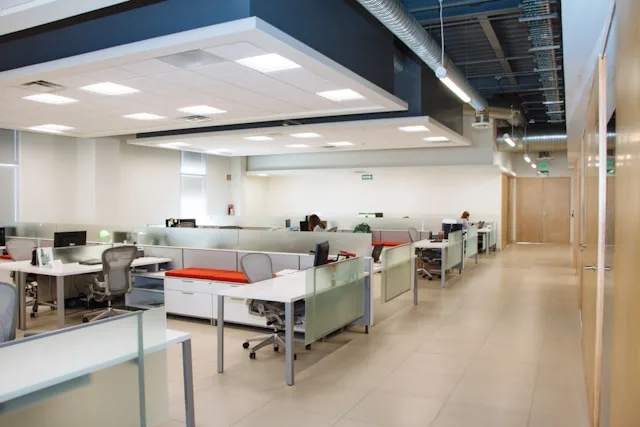Remote work opportunities expanded rapidly in the 2020-2021 period, bringing what was once a niche approach to employment to the mainstream. This was hailed as a major success for workers, with greater flexibility and career options providing significant advantages to convenience, finances, and even health. Despite such a strong period, fully remote work in 2023 and early 2024 is experiencing a decline, with significant debate about what this could mean for employees and businesses.
A Return to Tradition
Despite the internet being a core component of work and home life for decades now, adopting this technology into the workplace was always a stretch. The foundations of employment traditionalism date back much further than the digital age, so even successful experiences in new approaches have been a tough sell.
While returning to the in-office approach hasn’t completely taken over, it has been more common than expected given the success of experimentation with fully remote work, particularly over the last few years. The Bureau of Labor Statistics reported a downturn from 2021 to 2022, with 11% fewer private-sector establishments offering telework opportunities.
The appreciation of remote work is biased by age group, with younger workers desiring more in-person connections. This is contrary to what might be expected given the increased familiarity younger workers have with the technology that is required for a home setup. It might also reflect a less jaded view of the office work environment for those new to the employment landscape.
It should be noted that not all types of careers are returning to the office at the same rates. Retail and construction jobs, which offer around 5% of their opportunities remotely, tend to push more towards a return to the traditional. On the other side of the spectrum are those in tech and web development spaces. Web3 developers are an especially profound outlier, with 88% of workers employed remotely, with another 11% adopting a hybrid work approach.
Regardless of the statistics of change, there appears a fundamental gap between those pushing for more remote work opportunities and those fighting against it. Supporters of remote work are usually employees, whereas the opposition tends to come from those in management positions. For a more in-depth understanding of why, it’s important to view these positions from each comparative viewpoint.

Pros and Cons of Remote Work for Employees
The big advantages of remote work for employees revolve around choice and freedom. Travel alone can be an enormous component and a deciding factor not just on the jobs people pursue, but also on where they live. According to the Census Bureau, the average American daily commute time is around 53 minutes. Add to this the cost of gas, travel tickets, and vehicle maintenance, and commuting to work translates to a significant hit to finances and free time.
Dress code can similarly be an issue that introduces frustrations in cost, cleaning, and stress. Having to buy and maintain a professional suit in the office can be expensive and time-consuming, and it’s not an issue with remote work. Remote workers instead have the freedom to simply purchase cheap t-shirts from a wide selection of brands online and not have to worry about office-related frustrations. Setting your dress code also allows for more individuality, which can make workers feel more comfortable and productive. Having clothes that can double as everyday wear marks an obvious advantage.
Possible negatives for remote work employees are strongest for those who require guidance or those without access to a quiet remote working environment. Newcomers to a business can require hands-on teaching, and this can be complicated over an online connection. The same applies to workers on highly technical projects that require deep coordination with other team members.
While working from a home office also introduces fewer opportunities for distractions, which can create a more comfortable workspace, finding and creating a quiet remote work environment can present a significant challenge that’s not easily addressable. High property costs, busy home lives, and disrespectful roommates can all contribute to an unworkable remote workspace. Exactly how much these elements affect each worker will vary, but the difficulty is ever-present.
Pros and Cons of Remote Work for Employers
Some of the key pros of remote work for employers are the same as those for employees. If employers are also able to leverage remote opportunities for themselves they can reduce commute time, save on dress codes, and create more relaxing working environments.
Having less reliance on office work also introduces possibilities for downsizing office space and the associated costs. Lower power, internet, and cleaning bills are all feasible through remote work, providing the potential for higher profits.
As potential downsides, management structures within most businesses require a significant amount of visibility towards employees. Without an office where a manager or supervisor has a direct vision, it can be difficult to track employee progress and address issues as or before they arise. While there are tools that can provide hints about issues in remote work, these are often not as useful as direct management oversight.
Moving to remote work also means employing new systems to manage tasks that were traditionally accomplished in person. New training and technology can be expensive and time-consuming to implement, and be problematic for any workers who struggle with technology. While the benefits could outweigh the startup costs, it can be difficult to predict exactly where this tipping point will begin.
Despite recent setbacks in the proliferation of remote work, a complete backward slide into traditional work approaches is unlikely. With so many employees and employers having tasted the advantages of remote work, a rebound or balancing back to a more open standard is more probable.
As concerns about rising housing and transport costs develop, changes to the status quo seem all but inevitable. The arguments and pressure of some of the world’s richest like Elon Musk might say otherwise, but like everything that comes out of the mouths of the super-rich, these claims might be better taken with a grain of salt.